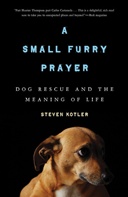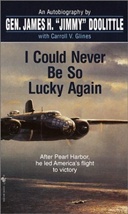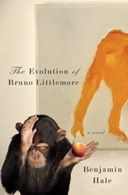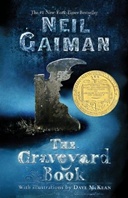“Mr. Durukan, if God is dead then everything is conspiracy.” — Ian McDonald, The Dervish House
 |
We Meant Well: How I Helped Lose the Battle for the Hearts and Minds of the Iraqi People by Peter Van Buren A tell-all expose of American mismanagement of the reconstruction of Iraq. The author is a career foreign service officer who spent a year in Iraq leading a State Department reconstruction field team, working with local Iraqis to help build a post-war economy: supervising projects meant to spark business ventures, infrastructure building, and individual entrepreneurship. Every well-meaning project, save for the successful founding of a 4H club for children, goes down the tubes due to pervasive Iraqi corruption: money disappears into crooked hands, equipment is stolen, newly-constructed buildings are either abandoned or repurposed by local strongmen. But even if there were no Iraqi corruption, the projects are doomed to failure anyway. During the 2003 invasion we destroyed Iraq’s civil infrastructure … roads, utilities, waste disposal … and after some initial efforts we apparently gave up rebuilding it; Iraqis are notably worse off today then they were before 2003, and our reconstruction projects cannot succeed without water, sewers, electricity, police protection, educated workers, or people with the money to buy products. Van Buren exposes the Catch-22ish nature of the American occupation at all levels, from the protected diplomatic and military fat cats of the Green Zone to the grunts at the FOBs, from the contractors to the spooks of the CIA. Meaningless goals are promulgated inside the Green Zone; field agents struggle to dream up projects to support those goals; money is thrown at the projects; no one follows through. Billions of unaccountable dollars have been turned over to sheiks, strongmen, and thugs. Every in-country American with any power or supervisory role is jockeying for promotion; no one stays in country long enough to see any project through to fruition; there’s no accountability; now that American attention has shifted to Afghanistan no one gives a shit what happens in Iraq. It would be funny if it were fiction … but it’s all true. I mentioned at the beginning of the review that the author is a career FSO. I suspect he was close to retirement when he wrote this book, because he surely has no career now. |
 |
A Small Furry Prayer: Dog Rescue and the Meaning of Life by Steven Kotler A Goodreads friend recommended this book, and I must say I’m glad I took her hint. Written by a professional writer and dog-lover, A Small Furry Prayer recounts the work of a husband and wife team of dog rescuers, a couple who adopt dogs slated for death at animal shelters in order to give them a last chance at rehabilitation and adoption, or at the very minimum a happy and loving home during their last months of life. Interestingly, I recently finished The Evolution of Bruno Littlemore (reviewed below), a novel about what it means to be human as opposed to a “lesser animal,” where the thrust is that we humans are not nearly as special as we like to think we are. Steven Kotler has the same outlook on the oneness of animals and humanity. Observing his pack of dogs, he sees empathy, altruism, grief, homosexuality, imitative behavior, moral behavior, intelligence, abstract intelligence, language skills, laughter, even hints of a belief in god. Between chapters recounting his troubles setting up a dog haven ranch in northern New Mexico, he devotes chapters to the presence of the aforementioned human traits to dogs, quoting the works of philosophers, psychiatrists, and scientists who study human and animal behavior. I’ve always thought of my dog as a person; so do most of us who love dogs. If I have a soul, so does my dog. I need no convincing. Nevertheless, this is a beautifully-written book, and it puts meat on the bones of the argument that we are all one. This is one of the best dog books I’ve read, and it belongs on every dog-lover’s shelf. |
 |
I Could Never Be So Lucky Again: An Autobiography by James H. Doolittle There was a time when every American knew the story of the Doolittle raid on Tokyo, just four months and a week after the Japanese attack on Pearl Harbor. Since I’ve been working as a volunteer tour guide at a major air museum, however, I’ve discovered this is no longer true, so every time I walk the group past our B-25 Mitchell bomber, I retell the story. It was only natural, then, that I would turn to Doolittle’s autobiography to learn more about this aviation pioneer. And pioneer he was. One of the early Army Air Corps aviators, Doolittle was the first pilot to fly and land on instruments alone. He was also a bit of a daredevil, wrecking plane after plane, performing aerobatics over crowded cities (he was also the first pilot to fly an outside loop), flying under bridges, taking wives and friends on unauthorized flights in Army aircraft … he wouldn’t have lasted a minute in today’s Air Force. Out of active duty in the 1930s he became one of the nation’s most famous air racers, piloting notoriously dangerous aircraft like the infamous Gee Bee. He rejoined the Army Air Corps just before WWII, and in the aftermath of Pearl Harbor was selected to lead the Tokyo raid. During the remainder of WWII, he served at high military levels in the invasions of North Africa, Italy, and Germany. As air commander during these campaigns he was a strong advocate for airpower and an independent US Air Force; indeed, he played a central role in the creation of the USAF in 1947. A busy life, and one full of contributions. I only wish he’d been more forthcoming in his autobiography. Oh, he tells the fullest version of the Tokyo raid mission I’ve yet read, he’s honest about his daredevil past, and he’s frank about his wartime differences with various military leaders, including Eisenhower … and yet I sensed throughout that Doolittle was holding back, not really speaking his mind. Indeed, once Doolittle gets into his military activities after the Tokyo raid, he mostly quotes letters of commendation and award citations, military fluff that bears only an approximate resemblance to reality. He pulls his punches. For additional insights into the Tokyo raid, Doolittle’s autobiography is a vital supplement to books such as Ted Lawson’s Thirty Seconds Over Tokyo. For a feel of the unregulated, frankly dangerous state of American aviation prior to the development of navigational aids and instrument flight, Doolittle delivers. For the authoritative retelling of the Doolittle Raid, you can’t do better than Doolittle’s own autobiography. But for the full story of Doolittle’s life and career? He lets us down … gently, but still down. |
 |
The Dervish House by Ian McDonald This is a science fiction novel only in the sense that near-future nanotechnology (the tale unfolds in 2027) makes some of the plot lines possible; at its heart it is a thriller, and a damned good one. Set in Istanbul, the story revolves around several people who live in or are associated with an old dervish house (Islamic monastery) in a busy section of the city: an inquisitive but shut-in boy, a 60s-something Greek bachelor with a political past, a young woman who owns an antique business and her wheeler-dealer commodities trader husband, another young woman from the provinces trying to make her way in the big city, and a young man who suddenly sees djinn and becomes a sort of prophet to a group of radicalized Islamic men. The Istanbul of McDonald’s story spans centuries; it is as much a living, breathing character as the people who inhabit it, its past as insistently immediate as its cosmopolitan present. The novel begins with a terrorist incident and builds to another, potentially world-changing attack (to avoid spoilers, I will say no more). As you progress through the novel, the story lines weave together and connections between the characters become apparent and ever more clear. McDonald shares William Gibson’s gift of being able to tie seemingly-unrelated strands together into a very satisfactory bow … I loved how all the elements came together in the end. Along the way you learn about Turkey and Istanbul, past and present; the international gas and fuel commodities industry; the potentials of nanotechnology; militant Islamism and terrorism; and Turkish folklore and superstition, including (most fascinatingly) the strange legends of mellified men (look that one up … you will be amazed). The characters are three-dimensional and utterly believable, the dialog real. The story flows; you’re drawn in almost from the first page. I thought I’d stumble over the Turkish names and words, which are set in type with Turkish characters, but I soon adjusted. For the curious, Ian McDonald includes a long explanation of the Turkish alphabet in the preface, complete with a pronounciation key … I skimmed over that and found I didn’t really need it. I couldn’t be more enthusiastic about this book. Ian McDonald is now on my short list of favorite science-fiction authors, along with William Gibson and Paolo Bacigalupi. |
 |
The Evolution of Bruno Littlemore by Benjamin Hale A long novel widely held by critics to be profound, I finished it wondering whether in fact it really is that profound. Benjamin Hale’s concept is sound: through the vehicle of a chimpanzee infatuated with humans and gifted with speech, examine what it is to be human, what it is to be animal. It isn’t that great a philosophical leap for me to see that the lines are blurred … hell, my dog taught me that years ago. The concept, though, does give the author ample room to poke fun at human pretensions, to set up some interestingly comic situations, and to present the reader with perhaps the ultimately unreliable narrator: Bruno, the chimp with the human nose. About halfway through this long novel, an autobiography in progress being dictated by the imprisoned Bruno to his human amanuensis Gwen, I began to doubt much of what Bruno relates. I think that is the author’s intention … Bruno provides hint after hint he’s simply making things up … and by the end of the novel I began to doubt that Bruno actually could speak at all. But that is not terribly important, because the story pulls you along. Bruno, you see, has led (or says he has led) a most interesting and eventful life. Here’s how he tells it: Bruno drops a clue on page X, and you’ll be pulled along another hundred pages to get the rest of that particular story. In between each revelation and its eventual unfolding are pages and pages of sophomoric philosophical rambling, navel-gazing of the highest order, and I must confess I speed-read those sections, flipping rapidly ahead to where the action resumed (did I mention the great length of this novel?). Never mind my mild criticism … I enjoyed the novel; indeed I could not put it down. It’s a Swiftian satire on the human condition, humorously cynical and insightful, perhaps not as profound as Benjamin Hale wanted it to be, but a good read nevertheless. |
 |
The Graveyard Book by Neil Gaiman My previous experience with Neil Gaiman includes the Stories anthology (co-edited with Al Sarrantonio) and the novel American Gods (both reviewed here). In both instances, Gaiman was writing for adults as well as children, and I was impressed with his ability to evoke that sense of childlike wonder in readers of all ages. I was less impressed with this work, which seemed to me to be written strictly for children. All children love scary stories about ghosts and witches: this story is full of them, plus a selection of truly evil spirits. Children will have much to love here; adults, not so much. There’s nothing to chew on … it’s all fluff. |